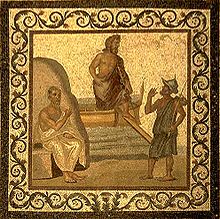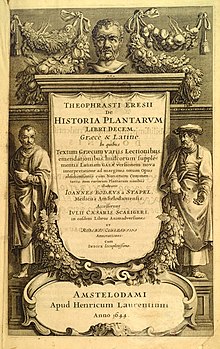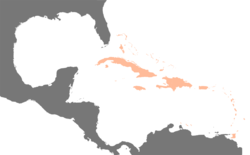From Wikipedia, the free encyclopedia
Ancient Greek medicine was a compilation of theories and
practices that were constantly expanding through new ideologies and
trials. Many components were considered in ancient Greek medicine, intertwining the spiritual with the physical. Specifically, the ancient Greeks believed health was affected by the humors,
geographic location, social class, diet, trauma, beliefs, and mindset.
Early on the ancient Greeks believed that illnesses were "divine
punishments" and that healing was a "gift from the Gods".
As trials continued wherein theories were tested against symptoms and
results, the pure spiritual beliefs regarding "punishments" and "gifts"
were replaced with a foundation based in the physical, i.e., cause and
effect.
Humorism
(or the four humors) refers to blood, phlegm, yellow bile and black
bile. Each of the four humors were linked to an organ, temper, season
and element.
It was also theorized that sex played a role in medicine because some
diseases and treatments were different for females than for males.
Moreover, geographic location and social class affected the living
conditions of the people and might subject them to different
environmental issues such as mosquitoes, rats, and availability of clean
drinking water. Diet was thought to be an issue as well and might be
affected by a lack of access to adequate nourishment. Trauma, such as
that suffered by gladiators, from dog bites or other injuries, played a
role in theories relating to understanding anatomy and infections.
Additionally, there was significant focus on the beliefs and mindset of
the patient in the diagnosis and treatment theories. It was recognized
that the mind played a role in healing, or that it might also be the
sole basis for the illness.
Ancient Greek medicine began to revolve around the theory of
humors. The humoral theory states that good health comes from a perfect
balance of the four humors: blood, phlegm, yellow bile, and black bile.
Consequently, poor health resulted from improper balance of the four
humors. Hippocrates, known as the "Father of Modern Medicine", established a medical school at Cos and is the most important figure in ancient Greek medicine. Hippocrates and his students documented numerous illnesses in the Hippocratic Corpus, and developed the Hippocratic Oath
for physicians, which is still in use today. His students and him also
created medical terminology that is part of our vocabulary today.
Medical words included acute, chronic, epidemic, exacerbation, relapse,
and others. The contributions to ancient Greek medicine of Hippocrates, Socrates and others had a lasting influence on Islamic medicine and medieval European medicine until many of their findings eventually became obsolete in the 14th century.
The earliest known Greek medical school opened in Cnidus in 700 BC. Alcmaeon, author of the first anatomical compilation,
worked at this school, and it was here that the practice of observing
patients was established. Despite their known respect for ancient Egyptian medicine,
attempts to discern any particular influence on Greek practice at this
early time have not been dramatically successful because of the lack of
sources and the challenge of understanding ancient medical terminology. It is clear, however, that the Greeks imported Egyptian substances into their pharmacopoeia, and the influence became more pronounced after the establishment of a school of Greek medicine in Alexandria.
Asclepieia
View of the
Asklepieion of
Kos, the best preserved instance of an Asclepieion.
Asclepius was espoused as the first physician, and myth placed him as the son of Apollo.
Temples dedicated to the healer-god Asclepius, known as Asclepieia (Greek: Ἀσκληπιεῖα; sing. Ἀσκληπιεῖον Asclepieion), functioned as centers of medical advice, prognosis, and healing. At these shrines, patients would enter a dream-like state of induced sleep known as "enkoimesis" (Greek: ἐγκοίμησις) not unlike anesthesia, in which they either received guidance from the deity in a dream or were cured by surgery.
Asclepeia provided carefully controlled spaces conducive to healing and
fulfilled several of the requirements of institutions created for
healing. The Temple of Asclepius in Pergamum
had a spring that flowed down into an underground room in the Temple.
People would come to drink the waters and to bathe in them because they
were believed to have medicinal properties. Mud baths and hot teas such
as chamomile
were used to calm them or peppermint tea to soothe their headaches,
which is still a home remedy used by many today. The patients were
encouraged to sleep in the facilities too. Their dreams were
interpreted by the doctors and their symptoms were then reviewed. Dogs
would occasionally be brought in to lick open wounds for assistance in
their healing. In the Asclepieion of Epidaurus,
three large marble boards dated to 350 BC preserve the names, case
histories, complaints, and cures of about 70 patients who came to the
temple with a problem and shed it there. Some of the surgical cures
listed, such as the opening of an abdominal abscess or the removal of
traumatic foreign material, are realistic enough to have taken place,
but with the patient in a state of enkoimesis induced with the help of
soporific substances such as opium.
The Rod of Asclepius is a universal symbol for medicine to this day. However, it is frequently confused with Caduceus,
which was a staff wielded by the god Hermes. The Rod of Asclepius
embodies one snake with no wings whereas Caduceus is represented by two
snakes and a pair of wings depicting the swiftness of Hermes.
Ancient Greek physicians
Ancient
Greek physicians did not regard disease as being of supernatural
origin, i.e., brought about from the dissatisfaction of the gods or from
demonic possession. 'The Greeks developed a system of medicine based on
an empirico-rational approach, such that they relied ever more on
naturalistic observation, enhanced by practical trial and error
experience, abandoning magical and religious justifications of human
bodily dysfunction.'
However, in some instances, the fault of the ailment was still placed
on the patient and the role of the physician was to conciliate with the
gods or exorcise the demon with prayers, spells, and sacrifices.
The Hippocratic Corpus and Humorism
The Hippocratic Corpus opposes ancient beliefs, offering biologically based approaches to disease instead of magical intervention. The Hippocratic Corpus
is a collection of about seventy early medical works from ancient
Greece that are associated with Hippocrates and his students. Although
once thought to have been written by Hippocrates himself, many scholars
today believe that these texts were written by a series of authors over
several decades. The Corpus contains the treatise, the Sacred Disease,
which argues that if all diseases were derived from supernatural
sources, biological medicines would not work. The establishment of the humoral theory
of medicine focused on the balance between blood, yellow and black
bile, and phlegm in the human body. Being too hot, cold, dry or wet
disturbed the balance between the humors, resulting in disease and
illness. Gods and demons were not believed to punish the patient, but
attributed to bad air (miasma theory).
Physicians who practiced humoral medicine focused on reestablishing
balance between the humors. The shift from supernatural disease to
biological disease did not completely abolish Greek religion, but
offered a new method of how physicians interacted with patients.
Ancient Greek physicians who followed humorism emphasized the
importance of environment. Physicians believed patients would be
subjected to various diseases based on the environment they resided. The
local water supply and the direction the wind blew influenced the
health of the local populace. Patients played an important role in their
treatment. Stated in the treatise "Aphorisms", "[i]t is not enough for the physician to do what is necessary, but the patient and the attendant must do their part as well". Patient compliance was rooted in their respect for the physician. According to the treatise "Prognostic",
a physician was able to increase their reputation and respect through
"prognosis", knowing the outcome of the disease. Physicians had an
active role in the lives of patients, taking into consideration their
residence. Distinguishing between fatal diseases and recoverable disease
was important for patient trust and respect, positively influencing
patient compliance.
With the growth of patient compliance in Greek medicine, consent
became an important factor between the doctor and patient relationship.
Presented with all the information concerning the patient's health, the
patient makes the decision to accept treatment. Physician and patient
responsibility is mentioned in the treatise "Epidemics",
where it states, "there are three factors in the practice of medicine:
the disease, the patient and the physician. The physician is the servant
of science, and the patient must do what he can to fight the disease
with the assistance of the physician".
Aristotle's influence on Greek perception
Ancient Greek philosopher Aristotle was the most influential scholar of the living world from antiquity. Aristotle's biological writings demonstrate great concern for empiricism, biological causation, and the diversity of life.
Aristotle did not experiment, however, holding that items display their
real natures in their own environments, rather than controlled
artificial ones. While in modern-day physics and chemistry this
assumption has been found unhelpful, in zoology and ethology it remains
the dominant practice, and Aristotle's work "retains real interest". He made countless observations of nature, especially the habits and attributes of plants and animals in the world around him, which he devoted considerable attention to categorizing. In all, Aristotle classified 540 animal species, and dissected at least 50.
Aristotle believed that formal causes guided all natural processes. Such a teleological
view gave Aristotle cause to justify his observed data as an expression
of formal design; for example suggesting that Nature, giving no animal
both horns and tusks, was staving off vanity, and generally giving
creatures faculties only to such a degree as they are necessary. In a
similar fashion, Aristotle believed that creatures were arranged in a
graded scale of perfection rising from plants on up to man—the scala naturae or Great Chain of Being.
He held that the level of a creature's perfection was reflected
in its form, but not foreordained by that form. Yet another aspect of
his biology divided souls into three groups: a vegetative soul,
responsible for reproduction and growth; a sensitive soul, responsible
for mobility and sensation; and a rational soul, capable of thought and
reflection. He attributed only the first to plants, the first two to
animals, and all three to humans.
Aristotle, in contrast to earlier philosophers, and like the Egyptians,
placed the rational soul in the heart, rather than the brain.
Notable is Aristotle's division of sensation and thought, which
generally went against previous philosophers, with the exception of Alcmaeon.
Aristotle's successor at the Lyceum, Theophrastus, wrote a series of books on botany—the History of Plants—which survived as the most important contribution of antiquity to botany, even into the Middle Ages. Many of Theophrastus' names survive into modern times, such as carpos for fruit, and pericarpium
for seed vessel. Rather than focus on formal causes, as Aristotle did,
Theophrastus suggested a mechanistic scheme, drawing analogies between
natural and artificial processes, and relying on Aristotle's concept of
the efficient cause.
Theophrastus also recognized the role of sex in the reproduction of
some higher plants, though this last discovery was lost in later ages.
The biological/teleological ideas of Aristotle and Theophrastus, as
well as their emphasis on a series of axioms rather than on empirical
observation, cannot be easily separated from their consequent impact on
Western medicine.
Herophilus, Erasistratus and ancient Greek anatomy
Frontispiece to a 1644 version of the expanded and illustrated edition of
Theophrastus's
Historia Plantarum (c. 1200), which was originally written around 200 BC
Nomenclature, methods and applications for the study of anatomy all date back to the Greeks.
After Theophrastus (d. 286 BC), the extent of original work produced
was diminished. Though interest in Aristotle's ideas survived, they were
generally taken unquestioningly. It is not until the age of Alexandria under the Ptolemies that advances in biology can be again found. The first medical teacher at Alexandria was Herophilus of Chalcedon (the father of anatomy),
who differed from Aristotle, placing intelligence in the brain, and
connected the nervous system to motion and sensation. Herophilus also
distinguished between veins and arteries, noting that the latter had a pulse
while the former do not. He did this using an experiment involving
cutting certain veins and arteries in a pig's neck until the squealing
stopped. In the same vein, he developed a diagnostic technique which relied upon distinguishing different types of pulse. He, and his contemporary, Erasistratus of Chios, researched the role of veins and nerves, mapping their courses across the body.
Erasistratus connected the increased complexity of the surface of the human brain compared to other animals to its superior intelligence. He sometimes employed experiments
to further his research, at one time repeatedly weighing a caged bird
and noting its weight loss between feeding times. Following his
teacher's researches into pneumatics, he claimed that the human system of blood vessels was controlled by vacuums,
drawing blood across the body. In Erasistratus' physiology, air enters
the body, is then drawn by the lungs into the heart, where it is
transformed into vital spirit, and is then pumped by the arteries
throughout the body. Some of this vital spirit reaches the brain, where it is transformed into animal spirit, which is then distributed by the nerves. Herophilus and Erasistratus performed their experiments upon criminals given to them by their Ptolemaic kings. They dissected these criminals alive,
and "while they were still breathing they observed parts which nature
had formerly concealed, and examined their position, colour, shape,
size, arrangement, hardness, softness, smoothness, connection."
Though a few ancient atomists such as Lucretius challenged the teleological viewpoint of Aristotelian ideas about life, teleology (and after the rise of Christianity, natural theology) would remain central to biological thought essentially until the 18th and 19th centuries. In the words of Ernst Mayr, "Nothing of any real consequence in biology after Lucretius and Galen until the Renaissance." Aristotle's ideas of natural history and medicine survived, but they were generally taken unquestioningly.
Galen
Aelius Galenus was a prominent Greek physician, surgeon and philosopher in the Roman Empire. Arguably the most accomplished of all medical researchers of antiquity, Galen influenced the development of various scientific disciplines, including anatomy, physiology, pathology, pharmacology, and neurology, as well as philosophy and logic.
The son of Aelius Nicon, a wealthy architect
with scholarly interests, Galen received a comprehensive education that
prepared him for a successful career as a physician and philosopher.
Born in Pergamon (present-day Bergama, Turkey), Galen traveled extensively, exposing himself to a wide variety of medical theories and discoveries before settling in Rome, where he served prominent members of Roman society and eventually was given the position of personal physician to several emperors.
Galen's understanding of anatomy and medicine was principally influenced by the then-current theory of humorism, as advanced by ancient Greek physicians such as Hippocrates. His theories dominated and influenced Western medical science for more than 1,300 years. His anatomical reports, based mainly on dissection of monkeys, especially the Barbary macaque, and pigs,
remained uncontested until 1543, when printed descriptions and
illustrations of human dissections were published in the seminal work De humani corporis fabrica by Andreas Vesalius where Galen's physiological theory was accommodated to these new observations. Galen's theory of the physiology of the circulatory system endured until 1628, when William Harvey published his treatise entitled De motu cordis, in which he established that blood circulates, with the heart acting as a pump. Medical students continued to study Galen's writings until well into the 19th century. Galen conducted many nerve ligation experiments that supported the theory, which is still accepted today, that the brain controls all the motions of the muscles by means of the cranial and peripheral nervous systems.
Galen saw himself as both a physician and a philosopher, as he wrote in his treatise entitled That the Best Physician is also a Philosopher. Galen was very interested in the debate between the rationalist and empiricist medical sects, and his use of direct observation, dissection and vivisection represents a complex middle ground between the extremes of those two viewpoints.
Dioscorides
The first century AD Greek physician, pharmacologist, botanist, and Roman army surgeon Pedanius Dioscorides authored an encyclopedia of medicinal substances commonly known as De Materia Medica.
This work did not delve into medical theory or explanation of
pathogenesis, but described the uses and actions of some 600 substances,
based on empirical observation. Unlike other works of Classical
antiquity, Dioscorides' manuscript was never out of publication; it
formed the basis for the Western pharmacopeia through the 19th century, a
true testament to the efficacy of the medicines described; moreover,
the influence of work on European herbal medicine eclipsed that of the Hippocratic Corpes.
Herodicus
Herodicus (Greek: Ἡρóδιĸος) was a Greek physician of the 5th century BC, who is considered to be the father of sports medicine. The first use of therapeutic exercise for the treatment of disease and maintenance of health is credited to him, and he is believed to have been one of the tutors of Hippocrates. He also recommended good diet and massage using beneficial herbs and oils, and his theories are considered the foundation of sports medicine.
He was specific in the manner that a massage should be given. He
recommended that rubbing be initially slow and gentle, then subsequently
faster, with the application of more pressure, which was to be followed
by more gentle friction.
Historical legacy
Through
long contact with Greek culture, and their eventual conquest of Greece,
the Romans adopted a favorable view of Hippocratic medicine.
This acceptance led to the spread of Greek medical theories
throughout the Roman Empire, and thus a large portion of the West. The
most influential Roman scholar to continue and expand on the Hippocratic
tradition was Galen (d. c. 207). Study of Hippocratic and Galenic texts, however, all but disappeared in the Latin West in the Early Middle Ages,
following the collapse of the Western Empire, although the
Hippocratic-Galenic tradition of Greek medicine continued to be studied
and practiced in the Eastern Roman Empire (Byzantium). After AD 750,
Arab, Persian and Andalusi
scholars translated Galen's and Dioscorides' works in particular.
Thereafter the Hippocratic-Galenic medical tradition was assimilated and
eventually expanded, with the most influential Muslim doctor-scholar
being Avicenna.
Beginning in the late eleventh century, the Hippocratic-Galenic
tradition returned to the Latin West with a series of translations of
the Classical texts, mainly from Arabic translations but occasionally
from the original Greek. In the Renaissance, more translations of Galen
and Hippocrates directly from the Greek were made from newly available
Byzantine manuscripts.
Galen's influence was so great that even after Western Europeans
started making dissections in the thirteenth century, scholars often
assimilated findings into the Galenic model that otherwise might have
thrown Galen's accuracy into doubt. Over time, however, Classical
medical theory came to be superseded by increasing emphasis on
scientific experimental methods in the 16th and 17th centuries.
Nevertheless, the Hippocratic-Galenic practice of bloodletting was
practiced into the 19th century, despite its empirical ineffectiveness
and riskiness.























![{\displaystyle U_{E}={\frac {1}{2}}\left[q_{2}\Phi _{1}(\mathbf {r} _{2})+q_{1}\Phi _{2}(\mathbf {r} _{1})\right]}](https://wikimedia.org/api/rest_v1/media/math/render/svg/f3981cb5fb5b21ca81251aec2068ed7f9683bbe8)



![{\displaystyle U_{\mathrm {E} }={\frac {1}{4\pi \varepsilon _{0}}}\left[{\frac {Q_{1}Q_{2}}{r_{12}}}+{\frac {Q_{1}Q_{3}}{r_{13}}}+{\frac {Q_{2}Q_{3}}{r_{23}}}\right]}](https://wikimedia.org/api/rest_v1/media/math/render/svg/1d7eb179f82e03df6e19a1f8d4642a228c3330aa)
![{\displaystyle U_{\mathrm {E} }={\frac {1}{2}}\left[Q_{1}\Phi (\mathbf {r} _{1})+Q_{2}\Phi (\mathbf {r} _{2})+Q_{3}\Phi (\mathbf {r} _{3})\right]}](https://wikimedia.org/api/rest_v1/media/math/render/svg/8a8ffbc8928f82321656293d0071ddf6c87b32c9)






![{\displaystyle U_{\mathrm {E} }={\frac {1}{2}}{\frac {1}{4\pi \varepsilon _{0}}}\left[{\frac {Q_{1}Q_{2}}{r_{12}}}+{\frac {Q_{1}Q_{3}}{r_{13}}}+{\frac {Q_{2}Q_{1}}{r_{21}}}+{\frac {Q_{2}Q_{3}}{r_{23}}}+{\frac {Q_{3}Q_{1}}{r_{31}}}+{\frac {Q_{3}Q_{2}}{r_{32}}}\right]}](https://wikimedia.org/api/rest_v1/media/math/render/svg/55f53c40778e34f67ec6385c4f9ab95dd595359e)



































